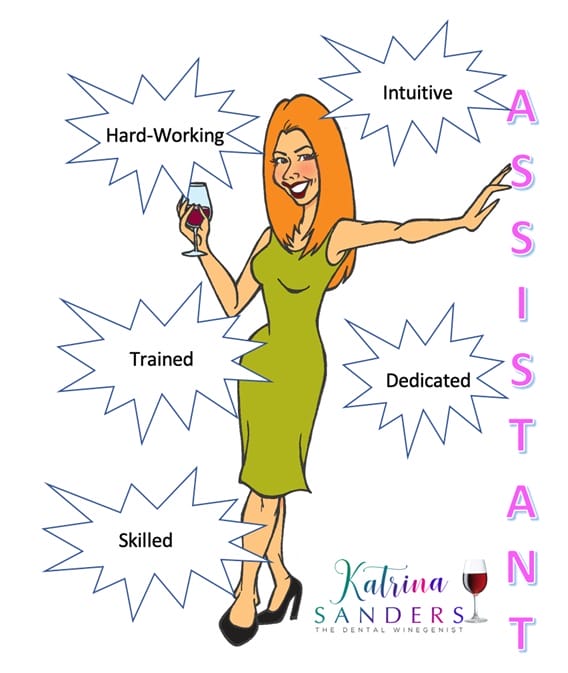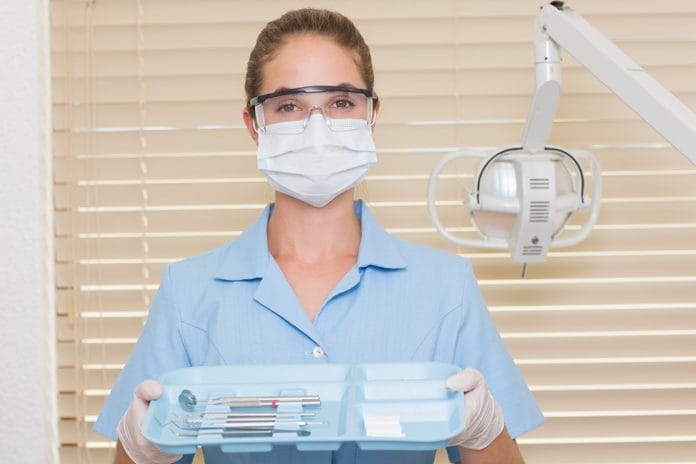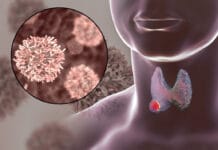Let’s face it: having an unprepared assistant for an assisted hygiene schedule is like trying to build a piece of Ikea furniture with a sloth, like my boyfriend’s crippling anxiety while he attempts to order from Dutch Bros drive-thru, or trying to gather all of your friends before the Uber leaves without you. Is it possible? Yes. Will it eventually get done? Yes. Did it require FAR more stress than necessary? Yes.
As discussed in Part 1, it is imperative that the office is structured to ensure a streamlined assisted hygiene program. In Part 2 of our Assisted Hygiene series, we discussed the various types of patients who may not align well with some of the limitations of an assisted hygiene program. Part 3 discusses the understanding that a considerable amount of success in an assisted hygiene schedule depends on the assistant in charge of the hygiene columns (notice how I said IN CHARGE?).
 The following includes the top five attributes of an effective hygiene assistant:
The following includes the top five attributes of an effective hygiene assistant:
1) A Dedicated Assistant
First and foremost, it simply isn’t considered assisted hygiene if the hygienist is expected to complete several columns of endless patients without the support of a designated dental assistant.
One of the most interesting assisted hygiene experiences I had was in an office where my “assistant” was the second front office receptionist who would occasionally put the phones on hold so that she could wipe down a room for me or schedule my patient for their next appointment. While I appreciated the help, it became increasingly clear that in this process, my assistant’s inability to commit to direct patient care affected the bottom line of the hygiene department. When I stepped into the hygiene position, I noted that patients were underdiagnosed, undertreated and, in turn, they undervalued the care they received. No wonder!
I’ve also worked in settings where I see two columns full of patients, while my assistant tiptoes back and forth between wiping down rooms, performing nearly-adequate coronal polishes, delivering crowns and holding the suction for the doctor.
In both of these scenarios, the hygiene assistant is, put simply, not dedicated entirely to the hygiene columns and as such, the quality of care, standards of excellence and patient support decline.
I can’t help but feel as though offices such as the above simply do not hire a dedicated assistant because they are concerned with the additional salary added to the payroll. I implore offices to consider: if your hygienist has the support to perform comprehensive periodontal charting and expose high-quality radiographs while having the time to thoroughly and completely utilize appropriate verbiage to treatment plan accordingly, the production within the department will take care of the overhead, I promise.
2) A Skilled Assistant
“Kayla will be your assistant today, but she’s not certified to take radiographs or coronal polish.” I cannot tell you how many times I would hear something along these lines from offices expecting me to work a full day of assisted hygiene. Don’t get me wrong, I appreciate the support that assistants like Kayla will provide, as there is value in the ways in which they can streamline various aspects of the hygiene schedule.
Most assisted hygiene schedules, however, require the support of someone who holds the certifications and skills needed to be able to step in and ensure the day continues to run smoothly. The handful of minutes it takes to expose radiographs and/or perform coronal polishing easily add up throughout the day.
While it may sound silly, the precious minutes saved by having an assistant complete tasks within the hygiene column are valuable beyond measure. It allows the hygienist time to educate the patient, consider valuable adjunctive services, or simply a few more minutes to effectively remove residual stain. In the very least, that handful of minutes permits the hygienist time to use the restroom or grab a bite of a snack in between patients.
I must also point out that a skilled assistant also implies an assistant who is familiar with the office. I cannot tell you how many times I’ve worked for practices that hire a temporary assistant to support a double-column hygiene schedule. My poor assistant wears a look of terror as they desperately rummage through drawers and the sterilization area in an effort to “cook in someone else’s kitchen,” so to speak. While I appreciate temporary assistants, I must admit that their unfamiliarity with the office, policies, patients, staff, and flow of the schedule make them unsuitable to effectively and supportively run an assisted hygiene schedule.
3) A Trained Assistant
We’ve all done it: attempted to complete periodontal charting on a patient while also training our recording assistant on how to use the charting platform. By the time we complete our charting, we realize that perhaps it would have been easier to chart by ourselves. We assume that after one time of throwing our assistant into the deep end during charting, they are experts in our charting platform. Rinse and repeat the same steps and frustrations with the remaining patients on our schedule.
I’ve worked with countless offices that complain about members of their staff only for me to discover that they never received proper training. With frustration, the same mistakes are made over and over again without adequate time and supportive kindness allocated to correct the errors effectively.
To be clear: effective training is not done by throwing someone into a situation and expecting them to pick up on intricate details of a new task while under the pressure of having a patient in the chair. Effective training is also not done by summarizing entire lectures of dental hygiene school into one sentence for your assistant. Heck, we all remember the entire lecture we received in hygiene school on how to hold a mouth mirror, right?!
What I mean is, “just tell patients that fluoride varnish helps with sensitivity,” does not provide adequate depth or quality of information on the true benefits of fluoride, nor does it set your assistant up for success in moments when they are supporting the hygienist in adjunctive services.
Assistants who have been supported with proper training and continuing education that aligns with the mission and values of the hygiene department they are supporting are set up for success and have the opportunity to provide greater support to their hygiene team.
4) A Hard-Working Assistant
This is HUGE!
Nothing slows me down more than an assistant who simply doesn’t “get it.” What I mean is: I’m running behind with needy patients or heavy stain, and my assistant has done their job by setting up the operatory next door. “Thank goodness,” I think to myself. But here’s the catch: once in the operatory next door, I notice that the slow speed suction and air/water attachments aren’t loaded with their plastic sleeves, the prophy angle isn’t placed on its handpiece, and the computer is loaded with someone else’s chart…
“Two seconds!” is what I think in my own head; two seconds it would take my assistant to do these things for me. But now, I get to do all of these tasks while pretending to listen to my patient, Gladys, talk about her 12 grandchildren. In between “mhmmmm’s” and “that’s so great’s,” I do a polka around my operatory in an attempt to look calm, cool, and collected when I’m really exhausted, frustrated, and unsupported! Meanwhile, my assistant is hiding in the dark room writing some Facebook post about how easy hygiene school must be.
REALLY? Because here’s the deal: the assistant did their job – they set up the operatory, but they just didn’t go the extra millimeter (see what I did there?) in supporting me. Assistants like this are also the assistants that roll their eyes when you ask for their help with coronal polishing or make audible sighs when you ask them to place fluoride while you move on to your next patient.
In the grand scheme of productivity, the hygienist is bound to be frustrated; in the end, someone must pick up the pieces that are missed. As I tell the offices I work with, it is in those moments that a great disservice is provided to the patients; when hygienists are unable to commit with 1.8CW laser-beam focus (I’m on a roll…cotton roll, that is!), patient care suffers. This means disease is misdiagnosed, restorative treatment is undiscovered, adjunctive therapies remain unrecommended, and your patient products collect dust on the shelves. The sentence prior is the true definition of an ineffective hygiene department and a department that should be re-evaluating their current trends.
5) An Intuitive Assistant
In my opinion, this is THE most important trait a hygiene assistant can have.
An intuitive assistant overhears the hygiene patient accepting treatment for subgingival minocycline delivery and brings in a loaded syringe with cartridges. An intuitive assistant understands that you will be referring your patient to perio, and brings in the referral pad completed with all pertinent information filled out. An intuitive assistant brings a glass of water when you get the embarrassing office stare-down for having a patient choke while using the ultrasonic. An intuitive assistant knows what size gloves you wear, understands how to properly and completely seat an ultrasonic insert, recognizes the opportunity to support the hygienist and, in turn, keeps patient care seamless.
I wish this article could provide the secret interview question to help you identify the perfect intuitive assistant, but unfortunately, intuition is difficult to screen for. Oftentimes requesting a working interview will help identify glimpses of intuition, but understand that “a quick learner” isn’t necessarily someone with immense “intuition.”
Intuition cannot be taught, but awareness can be.
How do you train an assistant to become more aware?
Step 1: The assistant must be present: Assistants who set up camp with their Cheetos and Instagram stories in the break room when they’re not “needed” will not be present and available to assist in any way. Advise your assistant that they are ALWAYS needed, and encourage them to be present for periodontal charting and linger by the room, checking in on you from time to time to ensure you have all you need.
Step 2: Be specific: It is important to recognize that while assistants are incredibly skilled, they cannot read our minds. I’ll never forget my first few weeks out of hygiene school; I was still waiting for my license to process, so I worked as a hygiene assistant. The hygienist was working on a patient who had severe dentinal hypersensitivity. She began advising the patient that she has a product she can place on the roots of the teeth to help with sensitivity, and new grad Katrina proudly fetched a sleeve of fluoride varnish before the world’s best RDH could even finish her sentence. With disdain, the hygienist scoffed at me, stating “no, get me topical anesthetic.” Side note: why do y’all do that? A patient has major root sensitivity, and you use 20% benzocaine? Was there a paper released about how benzocaine can penetrate cementum and dentinal tubules that I forgot to read or something? Nevertheless, it is important that hygienists recognize their role in delivering a specific and clear message to aid in seamless patient care.
Step 3: Work together as colleagues: I have the utmost respect for the assistants I work with. This means that when we work together, I speak to them as a colleague. I ask them, “What can I do to make your day easier?” Sometimes they will advise me on how to best read out periodontal charting parameters to aid in easier documentation. Sometimes they will advise they prefer to go through the schedule together before the day starts. Sometimes it’s as simple as, “I need to grab a 10 am snack so I don’t pass out, so if you don’t see me for 3 minutes, you know why.” Simple. For every assistant it may be different, but the more you can support them, the more inclined they will be to support you.
Step 4: Communication is key: As much as I like to ensure I am respecting my assistant, I also expect that they will have a willingness to support me. Therefore, I do deliver specific and clear tasks. For example, after I complete periodontal charting, I ask the assistant to remain in the room for a few minutes and listen to the conversation and recommendations I make to the patient. From there, I ask the assistant to recognize if I will want them to set up the diode laser, gather local antibiotics, or open up a fluoride varnish package for me. This way, I can focus my attention on treatment planning with the patient based on their needs. I also ask the assistant to add the adjunctive services to my appointment and to advise the doctor when I’m available for an examination. By being open and clear about what my requests are, I am permitting my assistant to truly become my right hand while providing excellent patient care.
With that, our three-part series on Assisted Hygiene comes to a close. It is my hope that this conglomeration of “Chicken Soup for the Double Column RDH” stories have, at the very least, made you realize that you aren’t alone. The challenges of assisted hygiene, while ever present, are absolutely manageable, and I’m grateful to have had the opportunity to share some of my favorite tips and tricks with you. Until we find a way to grow another pair of arms (wouldn’t that be amazing?), sticking together and sharing ideas is the best way to work through an assisted hygiene program successfully. Best of luck and Cheers!











